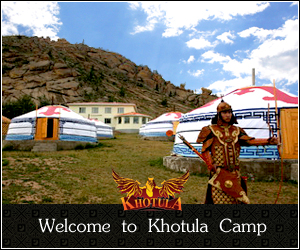Population of Mongolia
 Mongols are one of the great races of mankind, including the greater part of the inhabitants of China, Japan, Kazakh and the interior of Asia, with branches in Northern Europe and other parts of the world. Mongolians have developed into who they are from their intimate relationship with the vast lands of Mongolia. Nowadays, more than 10 million live in countries around the world, some of them habitats western bank of Caspian sea, central Afghanistan, Tibet and Chinese Yunnan. Now, 2.5 million Mongols live in Mongolia.
Mongols are one of the great races of mankind, including the greater part of the inhabitants of China, Japan, Kazakh and the interior of Asia, with branches in Northern Europe and other parts of the world. Mongolians have developed into who they are from their intimate relationship with the vast lands of Mongolia. Nowadays, more than 10 million live in countries around the world, some of them habitats western bank of Caspian sea, central Afghanistan, Tibet and Chinese Yunnan. Now, 2.5 million Mongols live in Mongolia.
Mongolians can be subdivided into more than 20 different ethnic groups, which are scattered across the country, these groups can be distinguished by their individual customs, histories and dialects. The population is homogeneous, with Mongol-speaking people consisting 95% of the total.
The only substantial non-Mongol group, representing over 5% of the population, is the Kazakhs, a Turkish-speaking people dwelling in the far West (ethnic groups). As fact shows 50% of population is Buddhist Lamaist, Shamanists and Christians are 6%, Muhslims 4%, atheist – 40% (as of 2004).
By the end of 2007, the Mongolian population reached 2.635.300. Currently, 49.6 percent of the population are male and 50.4 percent are female. In 2002, the percentage of population aged under 15 years was 32.6%, aged 15-64 years 63.9% and aged 65 years and over was 3.5%. The population of labor age reached 1,402,800. 50.5 percent or 1,232,800 of the total population are females. Due to the decrease in the birth rate, there were some considerable changes in age structure of the population. Population growth considerably decreased during the last decade.
Annual population growth stood at 3.6 percent in the 1970s, however it was at 1.4 percent in 2000. Researchers worry that if the decrease continues over the next few years, it will be at 1.35 percent in 2025, which may bring bad results for the reproductive ability of population.
The percentage of children between 0-14 in the population decreased by 13.8%, while the percentage of elders tended to double. Ulaanbaatar city has a younger population and the eastern part of Mongolia has an older population.
The growth of the population of labor age has been increasing. Even if the increase reduces social burdens in population structure, it also affects Mongolia’s current situation by increasing unemployment . The employment level is intended to be increased by mean of promoting the economic growth in recent years.












